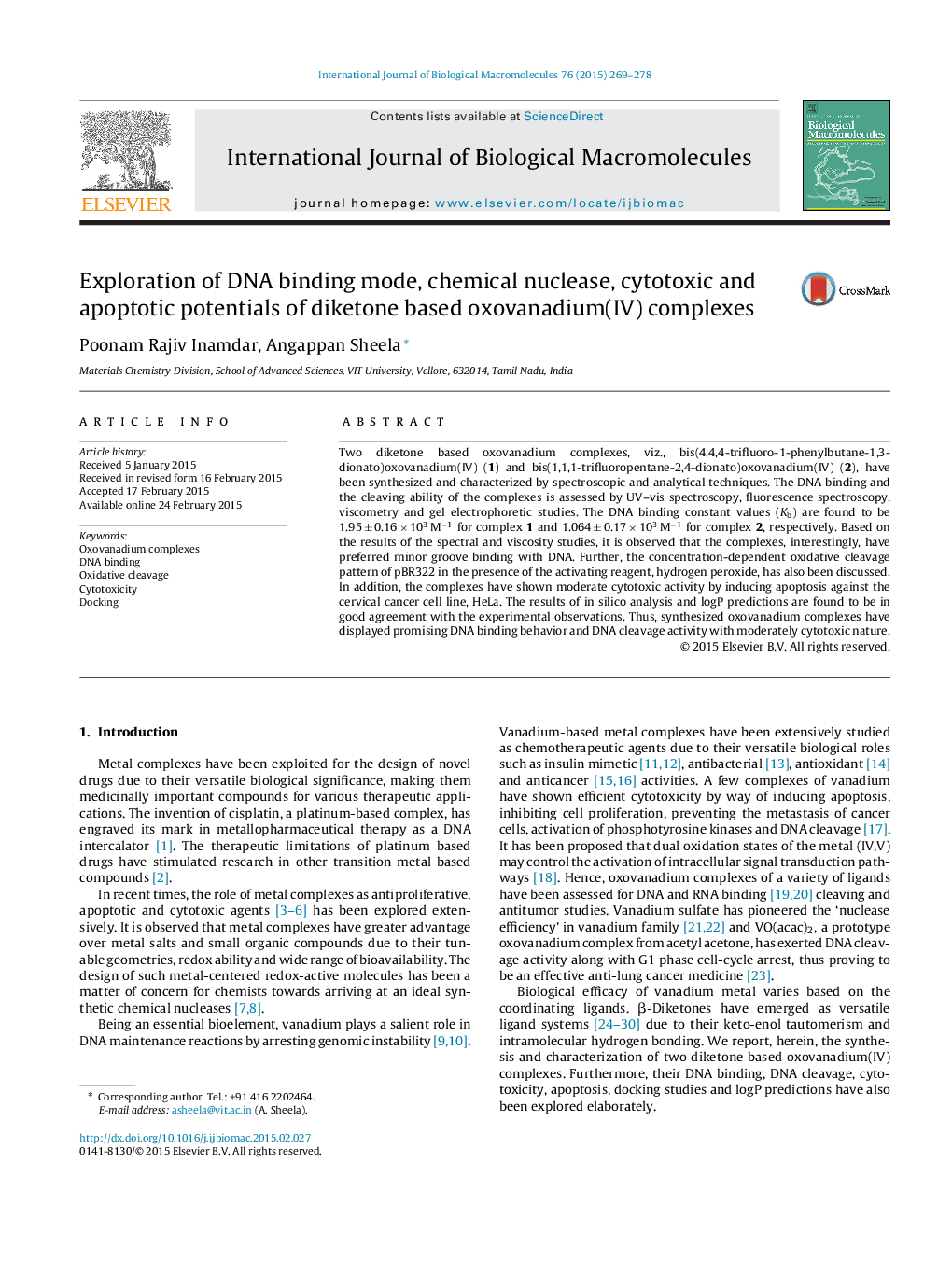| Article ID | Journal | Published Year | Pages | File Type |
|---|---|---|---|---|
| 1986424 | International Journal of Biological Macromolecules | 2015 | 10 Pages |
Abstract
Two diketone based oxovanadium complexes, viz., bis(4,4,4-trifluoro-1-phenylbutane-1,3-dionato)oxovanadium(IV) (1) and bis(1,1,1-trifluoropentane-2,4-dionato)oxovanadium(IV) (2), have been synthesized and characterized by spectroscopic and analytical techniques. The DNA binding and the cleaving ability of the complexes is assessed by UV-vis spectroscopy, fluorescence spectroscopy, viscometry and gel electrophoretic studies. The DNA binding constant values (Kb) are found to be 1.95 ± 0.16 Ã 103 Mâ1 for complex 1 and 1.064 ± 0.17 Ã 103 Mâ1 for complex 2, respectively. Based on the results of the spectral and viscosity studies, it is observed that the complexes, interestingly, have preferred minor groove binding with DNA. Further, the concentration-dependent oxidative cleavage pattern of pBR322 in the presence of the activating reagent, hydrogen peroxide, has also been discussed. In addition, the complexes have shown moderate cytotoxic activity by inducing apoptosis against the cervical cancer cell line, HeLa. The results of in silico analysis and logP predictions are found to be in good agreement with the experimental observations. Thus, synthesized oxovanadium complexes have displayed promising DNA binding behavior and DNA cleavage activity with moderately cytotoxic nature.
Related Topics
Life Sciences
Biochemistry, Genetics and Molecular Biology
Biochemistry
Authors
Poonam Rajiv Inamdar, Angappan Sheela,
